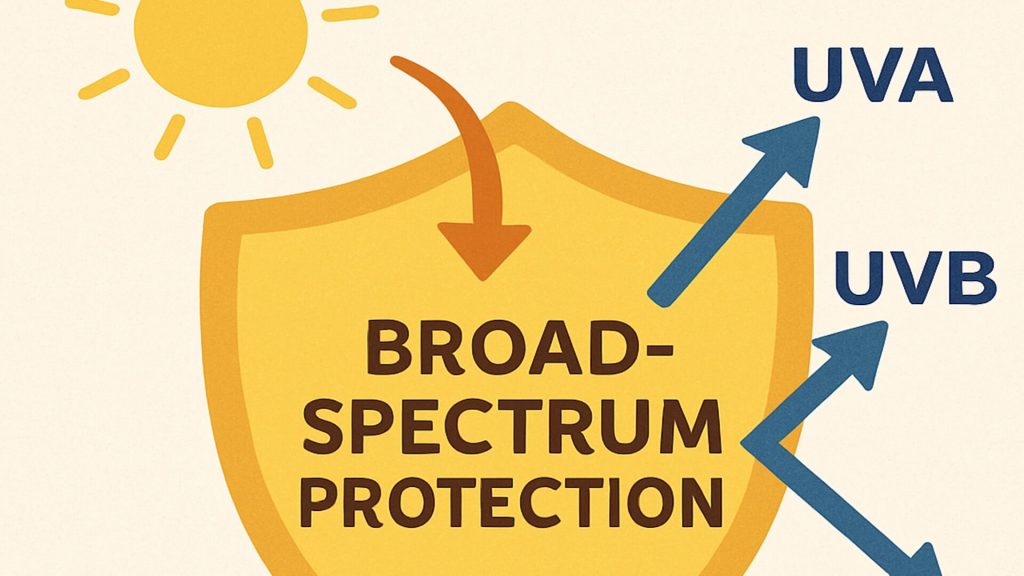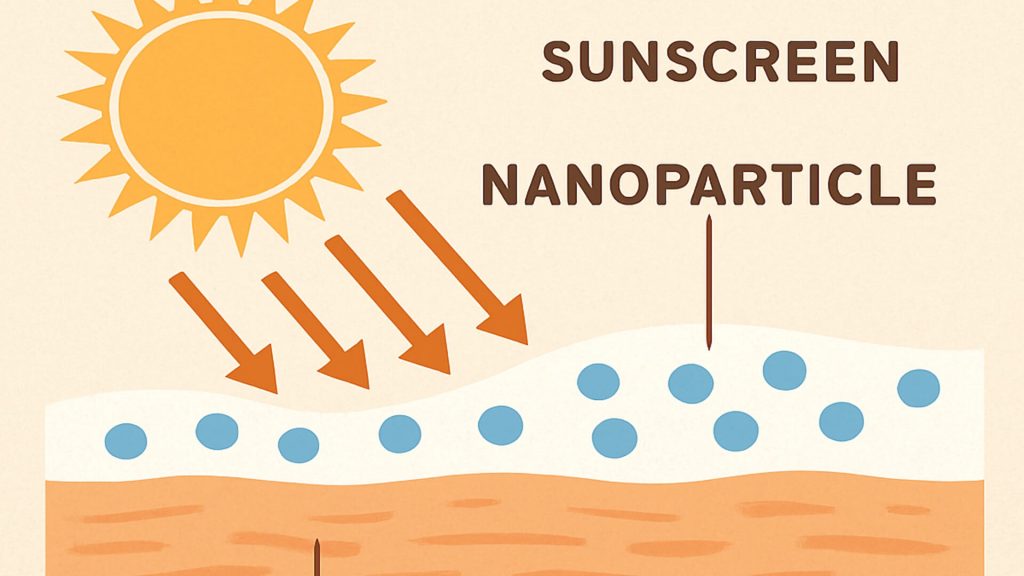Posted on: 16 Feb 2025
Read Time: 4 minutes
Titanium dioxide has become a key ingredient in mineral sunscreens due to its proven ability to block harmful ultraviolet (UV) radiation. As awareness grows around the potential irritants in chemical sunscreens, more consumers are turning to mineral-based alternatives for gentle, effective protection [1,5].
In this article, we examine how titanium dioxide sunscreen works, its benefits and limitations, and what current research reveals about its safety and environmental impact. When formulated correctly, titanium dioxide provides reliable broad-spectrum coverage against UVA and UVB rays, often alongside zinc oxide for complete skin protection [1,5].

Titanium dioxide reflects and scatters UV radiation, creating a physical barrier that protects the skin from photoageing and sunburn. While chemical filters absorb UV light, titanium dioxide blocks both UVA and UVB rays by remaining on the skin surface. For comprehensive UVA coverage, it is often combined with zinc oxide [1,5].
Mineral sunscreens containing titanium dioxide are well tolerated by sensitive and allergy-prone skin. Unlike chemical sunscreens, they rarely cause irritation or stinging. Dermatologists frequently recommend titanium dioxide for individuals with eczema, rosacea, or reactive skin types [2,5].
Titanium dioxide is photostable, meaning it does not degrade when exposed to sunlight. This stability maintains its protective strength for longer periods. However, experts still recommend reapplying sunscreen every two hours and after swimming or sweating to sustain full protection [3,4].
| Property | Effect On Skin Protection |
|---|---|
| Physical reflection of UV | Protects from UVA and UVB damage |
| Gentle composition | Reduces risk of irritation |
| Photostability | Maintains consistent coverage |
Table 1: Key benefits of titanium dioxide sunscreen
Mineral sunscreens are generally considered more eco-friendly than chemical formulations. Chemical filters such as oxybenzone and octinoxate have been linked to coral reef damage, leading to increased interest in titanium dioxide alternatives. Nonetheless, some research indicates that nanoparticles may still affect aquatic organisms under certain conditions [1,5].
Nanoparticles improve cosmetic appeal by reducing the white residue typical of mineral sunscreens. Studies show these nanoparticles remain on the outermost skin layer, without penetrating deeper tissues [1,2,5,6]. However, inhalation of titanium dioxide powder may present health risks, particularly during aerosolised product use, so caution is advised [6].

Despite formulation advances, titanium dioxide may leave a subtle white cast, especially on darker skin tones. Using tinted mineral sunscreens or blended formulations can reduce this cosmetic effect while maintaining strong UV protection [4,5].
Mineral sunscreens containing titanium dioxide often cost more to produce than chemical versions, resulting in higher retail prices and reduced availability in some regions [4].
| Concern | Key Insight |
|---|---|
| Nanoparticle safety | Safe topically; avoid inhalation exposure |
| Whitening effect | Reduced by tinted or micronised formulas |
| Cost considerations | Higher due to ingredient refinement |
Table 2: Risks and formulation considerations
When choosing a sunscreen, consider your skin type, sensitivity, and lifestyle. Titanium dioxide sunscreens are ideal for sensitive skin and for those seeking minimal chemical exposure.
Select a sunscreen with at least SPF 30, or SPF 50 for extended outdoor activity. Apply generously to all exposed areas and reapply every two hours, or more frequently when swimming or perspiring [3,4].
Combine sunscreen with additional protective measures, such as wearing wide-brimmed hats, sunglasses with UV filters, and seeking shade during peak sun hours. The NHS advises using sunscreen daily during spring and summer and year-round for individuals with heightened sun sensitivity or chronic skin conditions [3,4].
Titanium dioxide sunscreen offers an effective and safe option for sun protection, particularly for individuals with sensitive skin and environmental concerns. By understanding its benefits and potential risks, consumers can make informed decisions that align with their personal health and skincare goals. As research continues to evolve, staying updated on new findings supports optimal skin protection and overall well-being.
For expert guidance on prescription-strength skincare and sun-safe formulations, explore Monderma’s free consultation. Share this article to help others learn about safer sunscreen options.
Content is for informational purposes only. Monderma treatments are prescribed following consultation. Results and timeframes can vary. Use as directed by your prescriber.
Takes less than 2 minutes – see what your skin needs
Get Custom Formula